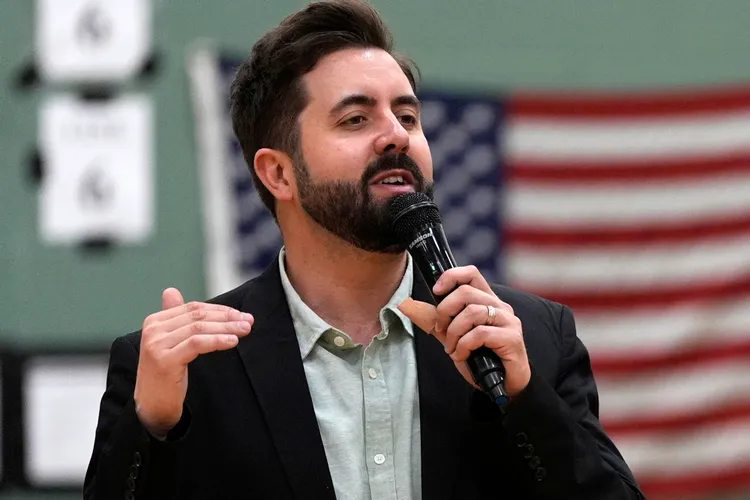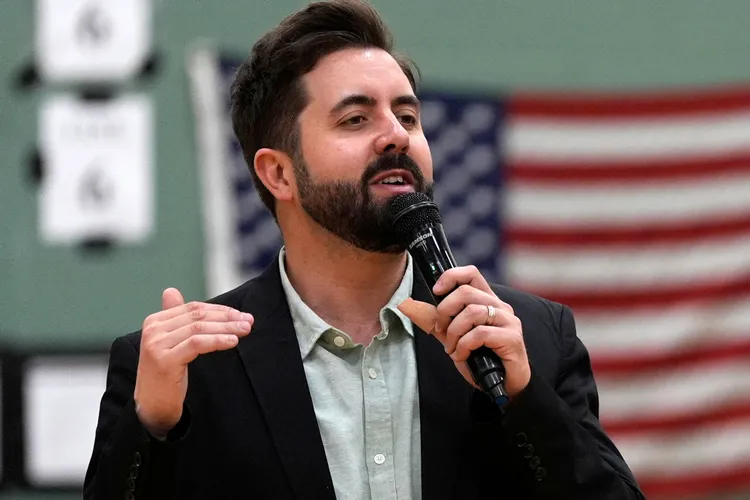Despite Backing from Vice President JD Vance, Cory Bowman Suffers Overwhelming Loss to Cincinnati Mayor Aftab Pureval in One-Sided Election
In a decisive election night outcome that drew national attention, the city of Cincinnati settled on familiar leadership while turning aside a challenger whose ties to high political office could not overcome the city’s entrenched partisan leanings. Cory Bowman, a Republican pastor, local business owner and the younger half-brother of JD Vance, the U.S. Vice President, was soundly defeated by incumbent Mayor Aftab Pureval—even with Vance’s public endorsement and his appeal to voters to get behind Bowman’s campaign. According to unofficial results from the Hamilton County Board of Elections, Pureval garnered more than 78 percent of the vote, while Bowman captured just around 22 percent.

Bowman’s bid was notable on several fronts. As a Republican standing in a city long dominated by Democratic voters, his candidacy represented an uphill climb from the start. On the campaign trail, he decried what he described as the current administration’s softness on rising crime and pledged to bring a new approach to public safety and community engagement. He emphasized his own credentials as a community pastor and entrepreneur, presenting himself as an outsider ready to shake up city leadership.
Yet despite those efforts—and despite the spotlight his surname brought—Bowman never gained traction. The election outcome affirmed the city’s political pulse: a city that continues to lean reliably Democratic was not swayed by the national-profile endorsement or the promise of change he offered. Analysts had long flagged the challenge he faced: Cincinnati’s electorate, recent voting history and partisan alignment had stacked the deck against him.
It was not just the scale of the loss that impressed many observers, but what it drew into focus. On election night, as the returns rolled in, the term “landslide” kept surfacing. Pureval, already a native of the city with deep institutional ties and a track record in public office, routed Bowman by a margin that left little question of the result. With 78.2 percent of the vote to Bowman’s 21.8 percent—per the compiled figures—voters made a clear choice about continuity over disruption in their city government.
From Bowman’s vantage point, this was more than an election—it was a bid propelled by his connection to national politics. His brother, Vice President Vance, publicly backed the campaign, tweeting in May that Bowman was “a good guy with a heart for serving his community. Get out there and vote for him!” That endorsement, however, did not translate into the electoral support Bowman needed. Voters did not appear persuaded by the familial link, focusing instead on local issues, long-standing party loyalties and the debates over crime, housing and city services.
In many ways, the race represented the converging currents of local government and national politics. While mayoral contests are mostly about schools, roads, public safety and budget allocations, the presence of a challenger tied to the nation’s second-highest office raised the stakes. For Vice President Vance, a rising figure in national Republican politics, Bowman’s campaign offered a chance to extend his influence locally—even as Cincinnati voters made clear they were comfortable with the city’s current direction. The disconnect between the national lens and local reality landed front and center in this campaign.

Bowman’s defeat is also striking in that he was the first Republican to appear on a Cincinnati mayoral ballot in over 15 years. The weight of that history cannot be overstated: Cincinnati is a city where Democrats have dominated municipal elections for decades, and the local political ecosystem continues to reflect that. Bowman’s challenge, ambitious though it was, confronted structural realities few candidates in his position could overcome.
Yet despite the margin, the emotional contours of the election night were more complex than victory and defeat. In his concession and remarks to supporters, Bowman extended a message of hope and unity—saying that regardless of outcome, he remained committed to the city he loves and to the community he had sought to serve. He emphasized that while the race was over, his desire to make a positive difference would continue. In that sense, the defeat did not mark the end of his ambitions or his engagement with local issues.
For Pureval, the victory affirms his standing in city government and gives him a renewed mandate to keep pushing forward on initiatives he championed. Elected in 2021 as Cincinnati’s first Asian American mayor, he has focused on affordable housing, community safety, economic growth and rebuilding trust in city services. With this re-election, his administration enters its next chapter with confirmation from voters that his leadership resonates—or at least that voters preferred continuity in turbulent times.
Looking ahead, the implications of this race extend beyond the mayor’s office. They reflect the dynamics of metropolitan politics in the U.S., where local contests are both influenced by national narratives and ultimately determined by hometown priorities. The Bowman-Pureval showdown underscores how endorsements—even from the highest offices—must align with on-the-ground concerns if they are to move the needle. For Bowman and his supporters, the outcome prompts reflection: Was the message clear enough? Did the local groundwork match the ambition? And perhaps most importantly, did voters feel the change was needed?
It also raises questions for the Republicans about strategy in major urban centers—whether the party can mount credible challenges in cities where demographics, party affiliation and electoral history overwhelmingly favor Democrats. Bowman’s bid may not have succeeded, but it provides a case study in what happens when national ties meet local realities.
As for Vice President Vance, the results may signal that even the prestige of his office has limited sway when local issues dominate the ballot box. The defeat of his half-brother in such clear terms suggests that voters weighed their decision on their terms—and that the story of local leadership remains a story of the local.
The aftermath of the election night is still unfolding. Bowman’s future plans remain open and observers will be watching whether he pivots to community initiatives, another run for office or steps back into private life. At the same time, Cincinnati enters the next phase of its municipal journey with Pureval at the helm, carrying the weight of promises and the expectation of a city ready for both progress and stability.
This race may be over, but the broader conversation is not. It leaves behind lessons about endorsements, electoral dynamics, party identity and the enduring power of local politics. And in a political landscape where names and national status often turn heads, the results in Cincinnati remind us that at the ballot box, the hometown matters most.


